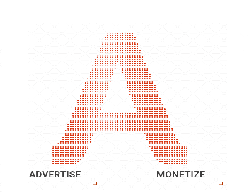Day 6: IFRS Presentation of Financial Statements (IAS 1)
The International Accounting Standard 1 (IAS 1) provides guidelines for presenting financial statements under the International Financial Reporting Standards (IFRS). The standard requires entities to present their financial statements in a fair and balanced manner, providing users with a clear understanding of the entity’s financial position, performance, and cash flows.
Introduction to IAS 1
IAS 1 is a fundamental standard in the IFRS framework, as it sets out the overall requirements for the presentation of financial statements. The standard is applicable to all entities that are required to prepare financial statements in accordance with IFRS, including companies, partnerships, and not-for-profit organizations.
The objective of IAS 1 is to ensure that financial statements are presented in a way that is consistent, transparent, and useful to users. The standard requires entities to present their financial statements in a manner that provides a fair and balanced view of their financial position, performance, and cash flows.
Components of Financial Statements
The IAS 1 standard requires entities to present the following components of financial statements:
- Statement of Financial Position: This statement provides a snapshot of the entity’s financial position at a specific point in time, including its assets, liabilities, and equity.
- Statement of Profit or Loss and Other Comprehensive Income: This statement provides information about the entity’s financial performance over a specific period, including its revenues, expenses, and profits.
- Statement of Changes in Equity: This statement provides information about the changes in the entity’s equity over a specific period, including dividends, share issues, and share repurchases.
- Statement of Cash Flows: This statement provides information about the entity’s cash inflows and outflows over a specific period, including its operating, investing, and financing activities.
Each of these components is essential in providing users with a comprehensive understanding of the entity’s financial position, performance, and cash flows.
Fair Presentation and Compliance
The IAS 1 standard requires entities to present their financial statements in a fair and balanced manner, providing users with a clear understanding of the entity’s financial position, performance, and cash flows. To achieve this, entities must:
- Comply with IFRS: Entities must comply with all relevant IFRS standards and interpretations.
- Provide fair presentation: Entities must provide a fair presentation of their financial statements, including all relevant information and disclosures.
- Avoid misleading information: Entities must avoid providing misleading information or omitting material information that could influence the decisions of users.
Fair presentation is a critical aspect of financial reporting, as it enables users to make informed decisions about the entity. Entities must ensure that their financial statements are presented in a way that is consistent with the IFRS framework and provides a true and fair view of their financial position, performance, and cash flows.
Notes and Disclosures
The IAS 1 standard requires entities to provide notes and disclosures to support the information presented in the financial statements. These notes and disclosures must:
- Provide additional information: Notes and disclosures must provide additional information that is relevant to the understanding of the financial statements.
- Explain accounting policies: Notes and disclosures must explain the entity’s accounting policies and any changes to those policies.
- Disclose material information: Notes and disclosures must disclose material information that could influence the decisions of users, including any significant events or transactions.
Notes and disclosures are an essential part of financial reporting, as they provide users with additional information that is necessary to understand the entity’s financial position, performance, and cash flows.
Accounting Policies
The IAS 1 standard requires entities to disclose their accounting policies and any changes to those policies. Accounting policies are the specific principles, bases, and rules that an entity uses to prepare its financial statements.
Entities must disclose their accounting policies in the notes to the financial statements, including:
- Basis of preparation: Entities must disclose the basis of preparation of their financial statements, including the accounting policies used.
- Changes in accounting policies: Entities must disclose any changes in accounting policies, including the reasons for the change and the impact on the financial statements.
- Accounting estimates: Entities must disclose any accounting estimates used in the preparation of the financial statements, including the nature of the estimate and the amount.
Disclosure of Accounting Estimates
The IAS 1 standard requires entities to disclose any accounting estimates used in the preparation of the financial statements. Accounting estimates are amounts that are subject to measurement uncertainty and are used in the preparation of the financial statements.
Entities must disclose the following information about accounting estimates:
- Nature of the estimate: Entities must disclose the nature of the accounting estimate, including the reason for the estimate and the method used.
- Amount of the estimate: Entities must disclose the amount of the accounting estimate, including any changes to the estimate.
- Sensitivity analysis: Entities must disclose any sensitivity analysis performed on the accounting estimate, including the impact on the financial statements.
Disclosure of Related Parties
The IAS 1 standard requires entities to disclose any related party transactions, including the nature of the relationship and the amount of the transaction.
Related parties are entities that are closely related to the reporting entity, including:
- Parent and subsidiary entities: Entities that are controlled by the reporting entity or that control the reporting entity.
- Associates and joint ventures: Entities that are jointly controlled by the reporting entity or that have significant influence over the reporting entity.
- Key management personnel: Individuals who have significant influence over the reporting entity, including directors and senior management.
Entities must disclose the following information about related party transactions:
- Nature of the relationship: Entities must disclose the nature of the relationship between the reporting entity and the related party.
- Amount of the transaction: Entities must disclose the amount of the related party transaction, including any changes to the transaction.
- Terms and conditions: Entities must disclose the terms and conditions of the related party transaction, including any significant terms or conditions.
Disclosure of Financial Instruments
The IAS 1 standard requires entities to disclose any financial instruments, including the nature of the instrument and the amount of the instrument.
Financial instruments are contracts that give rise to a financial asset or liability, including:
- Cash and cash equivalents: Entities must disclose any cash and cash equivalents, including the amount and any significant restrictions.
- Trade and other receivables: Entities must disclose any trade and other receivables, including the amount and any significant restrictions.
- Financial liabilities: Entities must disclose any financial liabilities, including the amount and any significant restrictions.
Entities must disclose the following information about financial instruments:
- Nature of the instrument: Entities must disclose the nature of the financial instrument, including the type of instrument and the terms and conditions.
- Amount of the instrument: Entities must disclose the amount of the financial instrument, including any changes to the instrument.
- Risk management: Entities must disclose any risk management strategies used to manage the financial instrument, including any significant risks or rewards.
Conclusion
In conclusion, the IAS 1 standard provides guidelines for the presentation of financial statements under the International Financial Reporting Standards (IFRS). The standard requires entities to present their financial statements in a fair and balanced manner, providing users with a clear understanding of the entity’s financial position, performance, and cash flows. Entities must comply with all relevant IFRS standards and interpretations, provide fair presentation, and avoid misleading information. The standard also requires entities to provide notes and disclosures to support the information presented in the financial statements, including accounting policies, accounting estimates, related party transactions, and financial instruments. By following the guidelines set out in IAS 1, entities can ensure that their financial statements are presented in a way that is consistent, transparent, and useful to users.
Bookkeeping Services @ ONE WEB ONE HUB: 
Our team of experts can help you prepare and present your financial statements under IFRS, including providing guidance on fair presentation and compliance, and ensuring that all necessary notes and disclosures are included. Please email us at mtfco@onewebonehub.com












